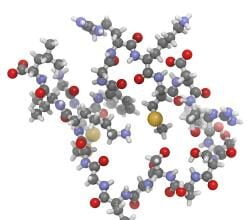Drug delivery systems that can sustain pharmaceutically efficient therapeutic drug concentration for prolonged periods will be highly useful instruments in modern medicine. Implantable drug-eluting systems, also known as implantable drug delivery systems, provide clinicians with the option of precise distribution, either regionally or into the circulatory system, thus ensuring optimal dosing during care. The main benefit of these systems is that they distribute the medication to the patient at a steady and fixed pace, reducing the necessary dosage and possible side effects while increasing therapeutic efficacy. They are very helpful for reducing medication errors.
- Implantable Drug Eluting Devices Emerge as Preferred System for Drug Delivery
- Rising Incidence Of Chronic Diseases Propelling Implantable Drug-Eluting Devices Sales
- Focus on Reducing Burden of Chronic Ailments to Fuel Sales
- Research and Development Initiatives to Drive Sales
- What Are Disadvantages Of Implantable Drug-Eluting And How Are The Challenges Addressed?
Implantable Drug Eluting Devices Emerge as Preferred System for Drug Delivery
Implantable drug eluting devices have many benefits over conventional drug delivery systems, including location-exclusive drug delivery, lower dose thresholds, and increased patient adherence. HIV/AIDS prevention, Diabetes treatment, chronic pain management, fertility, cardiology, and other applications are all possible with drug-eluting products.
Compared to standard oral or parenteral dosage types, implantable drug-eluting delivery systems have many benefits. For starters, implantable drug-eluting devices enable drug delivery at the location of greatest need. Implants used to cure brain tumors or prostate cancer are two examples. This could also allow for substantially lower drug doses, reducing possible side effects. Second, the implantable feature enables the long-term discharge of a therapeutic agent. The final, and possibly most significant, the benefit is improved patient adherence, as the medication plan connected with an implantable system is usually less onerous than pills or injections.
Rising Incidence Of Chronic Diseases Propelling Implantable Drug-Eluting Devices Sales
According to the World Health Organization (WHO) statistics, heart disorder remains to be the leading source of mortality worldwide accounting for 31percent of all fatalities in 2016. The most common heart condition, coronary artery disease (CAD), contributes to a high rate of acceptance of coronary stents such as drug-eluting stents (DES). The use of an implantable drug-eluting catheter for the cure of cardiovascular disease has become more common. Considering the volume of drug-eluting stents that have earned Regulatory authorization in the last few years, stents are expected to lead the international implantable drug-eluting device demand.
According to the National Institute of Health, the rate of opioid abuse and overdose is increasingly growing. Every year, nearly 15 million individuals globally are estimated to be heroin and opioid users. Implantable drug-eluting devices allow localized and location-specific drug delivery, which is extremely significant in cardiology, oncology, and the treatment of opioid addiction.
Focus on Reducing Burden of Chronic Ailments to Fuel Sales
Cardiovascular diseases (CVD), which include strokes, hypertension, and heart diseases, remain a key reason for death in the United States, Europe, and Asia. Healthcare systems around the world, especially in developing countries, are confronted with the common challenges of aging populations and increasing incidences of long-term chronic diseases. North America retains its dominance in the demand sector for implantable drug-eluting products because Heart diseases, accompanied by cancer, affect nearly half of all adults in the United States.
South Asians are predisposed to threat factors correlated with heart disease and have a proclivity to store body fat in the belly, liver, and muscles. This strongly enhances the substantial absorption of implantable drug-eluting devices, which is estimated to be about fifty-five percent. Given the rapid acceptance of implantable drug-eluting devices in South Asia, especially for developments in heart disease management, the area will be at the frontline of the implantable drug-eluting technologies industry shortly.
Research and Development Initiatives to Drive Sales
The creation of modern implantable drug-eluting devices including catheters and valves has been a game-changer in the management of obstructive coronary heart disorders, chronic diseases, and severe pain control.
The latest launch of implantable drug-eluting catheters as well as other injectable drug-eluting tools in birth control, chronic pain management, and interventional cardiology is being celebrated as ground-breaking. The use of these devices in many percutaneous cardiac procedures can have massive future growth. For instance, REVA Medical Inc. reported the commercial production of its implantable drug-eluting products, namely the Fantom Encore Bioresorbable Scaffold, as an alternative to metal catheters for the diagnosis of coronary heart disease in October 2018.
Medtronic, Abbott Laboratories, and Boston Scientific Corporation are among the major industry players. To gain a larger customer base, these players employ comprehensive sustainability approaches such as innovative product growth and geographic and distribution channel expansion. Furthermore, business leaders are hyper-focused on generating economic value and addressing unmet requirements. For example, in October 2017, Boston Scientific Corporation agreed to acquire Apama Medical, Inc. to expand its range of specialized arrhythmia remedies. Likewise, Medtronic plc obtained FDA authorization and released its Resolute Onyx Drug-eluting Stent (DES) in the United States in May 2017, increasing its cardiac stents consumer line.
What Are Disadvantages Of Implantable Drug-Eluting And How Are The Challenges Addressed?
Since traditional metallic stents are irreversible implants, they limit vessel mobility, restricting potential treatment choices in the future, which is a major challenge for the industry. However, this issue was resolved with the introduction of bioresorbable drug-eluting devices. Because of their possible benefits, bioresorbable drug-eluting devices have appeared as the breakthrough in interventional cardiology. REVA Medical Inc. and Biotronik Inc. are among the companies developing bioresorbable drug-eluting tools for the diagnosis of coronary heart disorder and other vascular applications.








